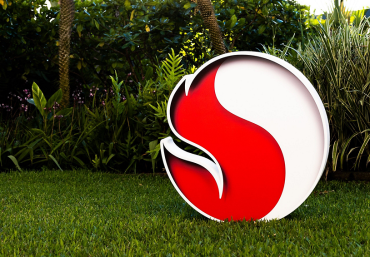
- AI
- Artificial Intelligence
- Autonomous Agents
- Enterprise Software
OpenAI’s GPT-5 Set for August Release With Expanded Tools
6 minute read

OpenAI’s GPT-5 artificial intelligence system streamlines enterprise AI adoption with automatic model selection and expanded multimodal capabilities
Key Takeaways
- OpenAI targets August 2025 for GPT-5 launch with automatic model selection that chooses optimal AI capabilities for each user prompt, streamlining the current confusing array of multiple models.
- Unified platform consolidates reasoning, multimodal, and autonomous features into a single interface, potentially disrupting sectors including education, healthcare, legal, and design through automated complex workflows.
- Enterprise integration with Microsoft Copilot accelerates as GPT-5 incorporates voice, image, audio, and video generation with a 1 million token context window for handling large-scale projects.
Introduction
OpenAI prepares to launch its most ambitious artificial intelligence model yet, with GPT-5 set to automatically select optimal AI capabilities for user prompts without manual intervention. The August 2025 release represents a fundamental shift from OpenAI’s current fragmented model lineup to a unified platform that consolidates reasoning, multimodal processing, and autonomous task execution.
This strategic consolidation addresses enterprise confusion over model selection while positioning OpenAI to compete more effectively against Google’s Gemini and Anthropic’s Claude. The development signals broader industry movement toward simplified AI interfaces that hide technical complexity from end users.
Key Developments
CEO Sam Altman first announced the automatic model selection feature in February, describing a system that deliberates before responding, similar to human conversation patterns. The technology integrates OpenAI’s o-series reasoning models with GPT-series models to deliver higher-quality responses while maintaining efficiency.
Nick Turley, Head of ChatGPT, explains the vision: “The plan is to unify all of these ideas into something like GPT-5 such that you just ask it a question and it needs to think of things, very much like when you talk to a human.” The system defaults to faster GPT models for simple queries while automatically deploying specialized models for complex STEM topics and analytical tasks.
Internal development logs confirm a finalized GPT-5 candidate as of July 13, 2025. The model incorporates enhanced chain-of-thought reasoning, long-term memory capabilities, and a 1 million token context window that supports extended conversations and large project management without losing contextual awareness.

Market Impact
The announcement intensifies competition in the consumer AI market, where OpenAI maintains significant market share since ChatGPT’s 2022 debut. Enterprise partnerships, particularly the deepening integration with Microsoft Copilot, position GPT-5 to capture additional productivity software revenue through cloud-based deployment and licensing agreements.
Investment analysts highlight new opportunities in AI infrastructure companies that support GPT-5’s expanded computational requirements. The model’s multimodal capabilities spanning text, image, audio, and video generation create potential revenue streams across multiple industry verticals.
OpenAI’s freemium pricing strategy, offering basic GPT-5 access alongside premium subscription features, mirrors successful software-as-a-service models that maximize user base expansion while monetizing power users and enterprise clients.
Strategic Insights
GPT-5’s unified architecture addresses a critical enterprise pain point: model selection complexity that currently requires technical expertise to navigate OpenAI’s multiple specialized offerings. This simplification strategy enables broader adoption across non-technical business functions including human resources, marketing, and customer service operations.
The integration of autonomous agent capabilities positions GPT-5 to automate complex workflows previously requiring human oversight. Industries including legal document review, medical diagnosis assistance, and financial analysis face potential disruption as the model handles multi-step reasoning tasks with enhanced accuracy.
Microsoft’s strategic partnership gains additional value through GPT-5’s integration with productivity suites. This symbiotic relationship reinforces Microsoft’s competitive position against Google Workspace while providing OpenAI with established enterprise distribution channels.
Expert Opinions and Data
Turley acknowledges the technical challenges in balancing response speed with answer quality: “It actually turns out to be quite nuanced in terms of how people’s preferences fall.” The development team addressed these preferences by maintaining manual model selection options for advanced users while defaulting to automatic selection for mainstream adoption.
Recent performance benchmarks demonstrate GPT-5’s capabilities in mathematical reasoning, with Altman noting gold medal-level performance in chatbot mathematics competitions. Industry analysts project significant productivity gains across sectors that adopt GPT-5’s expanded feature set. The model’s improved accuracy over extended conversations, combined with reduced hallucination rates, addresses key enterprise concerns about AI reliability in business-critical applications.
Conclusion
GPT-5 represents OpenAI’s strategic response to enterprise demands for simplified AI interfaces and comprehensive capabilities within a single platform. The August launch positions the company to capture additional market share while addressing competitive pressure from Google and Anthropic through unified model architecture.
The release establishes new benchmarks for AI performance across reasoning, multimodal processing, and autonomous task execution. Enterprise adoption rates and competitive responses from rival AI companies will determine whether GPT-5’s unified approach becomes the industry standard for artificial intelligence platforms.








